- History of the Navesink Maritime Heritage Association
Charles Ladoulis
- The impetus for the founding of the Navesink Maritime Heritage Association (NMHA) was initiated by members of the local community who were interested in the preservation of the maritime heritage of our community, in promoting appreciation of the ecology of the Navesink River, and encouraging responsible river use and environmental education.
- The first event developed from a meeting in Hartshorne Woods in 1998 and that event became the first Wooden Boat Fest in June 1999.
- During this festival eight wooden canoes were built by youths and adults representing various area youth organizations, including the Red Bank Charter School, the Community YMCA, Aslan Youth Ministries, Salvation Army Youth Program, as well as several families. Since that time, various youth organizations, scout troops, and schools have continued to participate.
- This program was a great success and has been repeated and expanded every year since that date. This program also became a catalyst for development of the organization of Navesink Maritime Heritage Association that now sponsors historical presentations, boatbuilding restoration and preservation, antique and classic boat festival every year, and educational programs with public and private area schools.
- NMHA was incorporated in 2002 and in 2003 attained status as a tax exempt 501c3 non-profit educational organization. Its mission is to promote appreciation and preservation of the New Jersey Navesink River communities’ maritime heritage. NMHA has developed innovative and successful educational environmental and recreational programs over the past 9 years.
- The organization’s track record has shown it to be an innovative organization that is making a significant positive impact in the way the Navesink communities perceive and use the river. This has been achieved by teaching and involving hundreds of youths and adults to achieve a greater understanding of the river’s heritage. Through these programs, members of NMHA also obtained a deeper insight into the benefits of the river as a resource for educational purposes.
THE NAVESINK RIVER ECOLOGY
- The Navesink River is the northern branch of the Shrewsbury Rivers. The Shrewsbury Rivers are located south of the Monmouth highlands, and drain north to the Raritan Bay. The Navesink River is approximately 5 miles long and flows from Red Bank to Sea Bright. The River is approximately ½ mile wide and rarely deeper than 8 feet at low tide.
- The Navesink River is a tidal salt water environment that is fed by a number of creeks and streams. The largest of these streams is the Swimming River that is a tributary of the Navesink River and extends upstream to the reservoir in Lincroft and Colt’s Neck.
- The Swimming River can be navigated by canoes and small craft for over three miles and has remarkably undeveloped river banks and extensive wetlands. The Swimming River watershed forms a considerable part of Monmouth County and contains the Swimming River Reservoir which is the major fresh water supply for Red Bank and Monmouth County.
- The Navesink and Swimming Rivers are part of the Atlantic flyway and visited by a huge variety of birds, including songbirds, wading birds, and raptors such as hawks, osprey and bald eagles.
- The river has recently seen a positive transformation in its water quality and has recently been reopened for shell fishing and is undergoing oyster bed restoration. Fish populations are healthy and the river is occasionally visited by sea turtles, dolphins and occasionally seals.
- The river’s wildlife is exceptional taking into account the dense development around the river and heavy population pressures. Development along the river’s shores are threatening wildlife habitats and at present the greatest threat to the river is loss natural shoreline to bulkheads and non-point source pollution from farm and landscape chemicals treatments and fertilization.
- THE NAVESINK MARITIME HISTORY
- The Navesink River was a major seasonal food source for the Lenape Indian tribes and provided the tribes with fish, game, fowl and probably most importantly shellfish. Navesink River Banks were often visited by Native Americans until they were displaced by European Settlers.
- Monmouth County was settled in the 1600 after Henrik Hudson the explorer first anchored off Atlantic Highlands. Since then Navesink River became a major transportation artery connecting the settlers in the Navesink portion of Monmouth County with New York.
- Initially this transportation consisted of Navesink and Shrewsbury packets -- shallow draft centerboard sailing vessels, often schooner rigged, or otherwise sloop rigged. A substantial export trade developed for farm produce, livestock and a large amount of shellfish to supply New York City in exchange for manufactured goods.
- In the first half of the 1800’s steamboat transportation was initiated and with more reliable service to and from New York and surrounding towns, the Navesink area also became popular as a resort area. Steamboat transportation flourished when owned by railroad companies serving the Jersey shore the early 1900’s and led to growth of Red Bank and surrounding communities. The expansion of railways to the bayshore led to increases in population and increased pollution and loss of wild life and fisheries.
- The Navesink River was a major source of famed Navesink Oysters for New York but increase in population and water pollution led to shellfish and human disease and in the 1950’s commercial shellfish harvesting was officially closed. By the 1950’s railroads and improved highways had displaced steamboat travel and trade to the extent that in the second half of the twentieth century the Navesink River was used only for recreation boating and fishing.
- New oyster reefs have been reintroduced in the last few years. It is expected that the positive effects of active oyster reefs will further restore the river to a condition that approximates the condition it was in when European settlers first arrived.
- NMHA activities and programs of environmental education and community involvement are aimed to promote appreciation for preservation of the Navesink River as a source of joy and pride to the Navesink river residents and communities.
- Photograph of Albertina on the Navesink River by the cove with Blackpoint (Wigwam Rd area) in the
- NMHA PROGRAMS AND ACTIVITIES
- The programs and activities of NMHA are self-supporting, or funded through grants, tax exempt contributions, or donations. NMHA has been the recipient of several grants from the Sunfield Foundation that have provided capital for equipment and trailer vehicles for staging of programs. NMHA is actively pursuing a site for development of a permanent facility in which to conduct boat restoration programs, conduct meetings, and house its collections of donations of boats and equipment.
- The tax-exempt non-profit 501c3 status now enables NMHA to compete for public and private funding, as well as to conduct fundraisers; fee based educational programs, and other revenue generating activities.
- Community Boat Building
- NMHA has organized wooden boat building festival in June every year since1999 when 4 to 8 canoes are built during a weekend, and then launched at the Fair Haven boat ramp dock area on Sunday
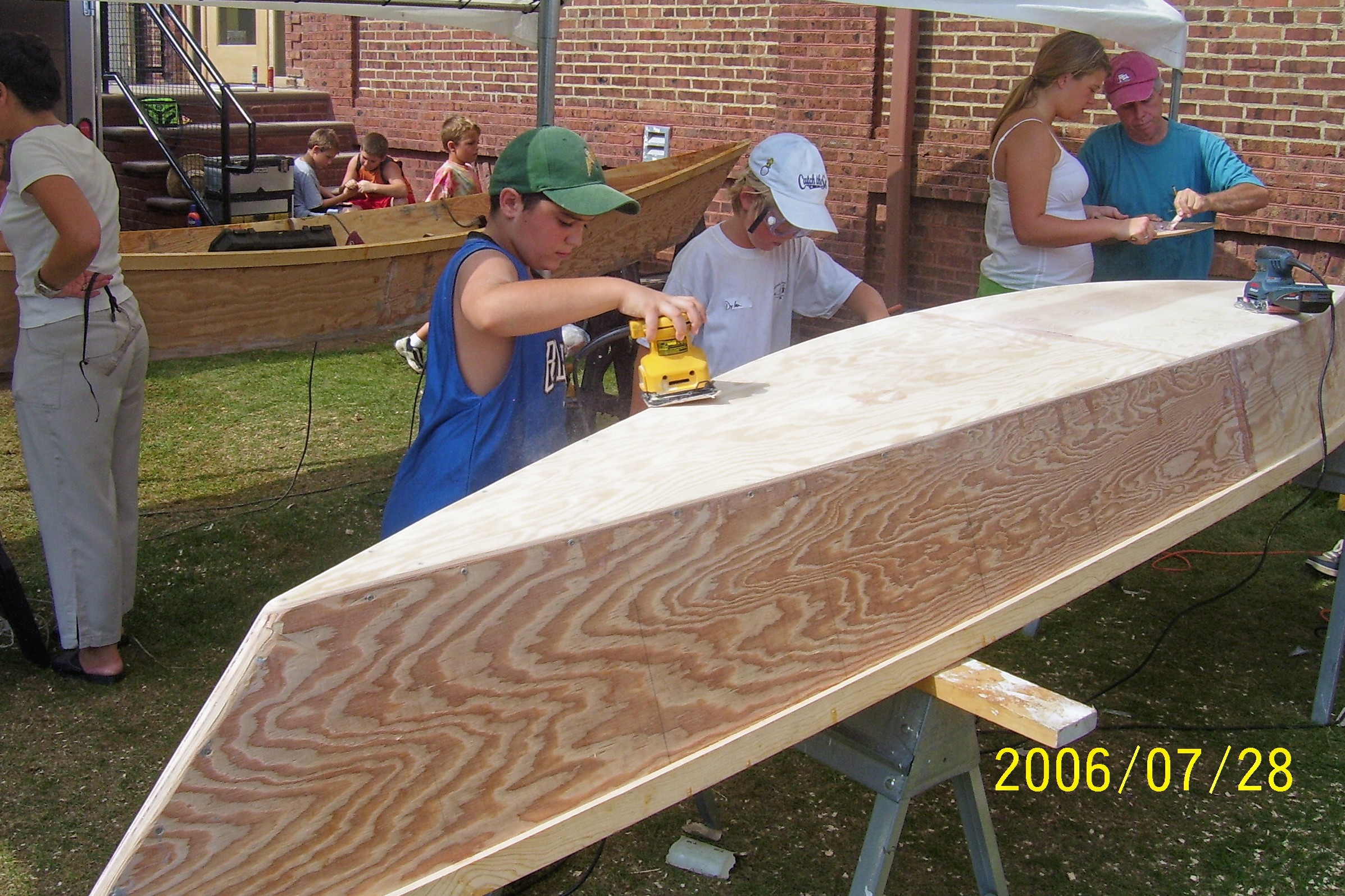 afternoon.
afternoon. - In 2007, the largest event ever was held on the grounds of the Fair Haven Fire Company and hosted 10 families and organizations from Monmouth County. NMHA has built 10 boats for Red Bank Parks and Recreation department that will launch its fleet this month for its summer camp on the Navesink River.
The craft we build is a wooden flat-bottom canoe that is named after its alleged construction time, but we have built on typical weekend events over 50 boats since 1999, with teams of 4-5 students per boat.
Each can carry one adult or two kids.
- They are VERY stable, due to the flat bottom.
- They are affordable, about $480 each.
- They are pretty indestructible, and easily repaired.
- These are perfect craft for our River Ranger Program.
- They are easily car topped, weigh about 50 lbs and are 15 ft long.
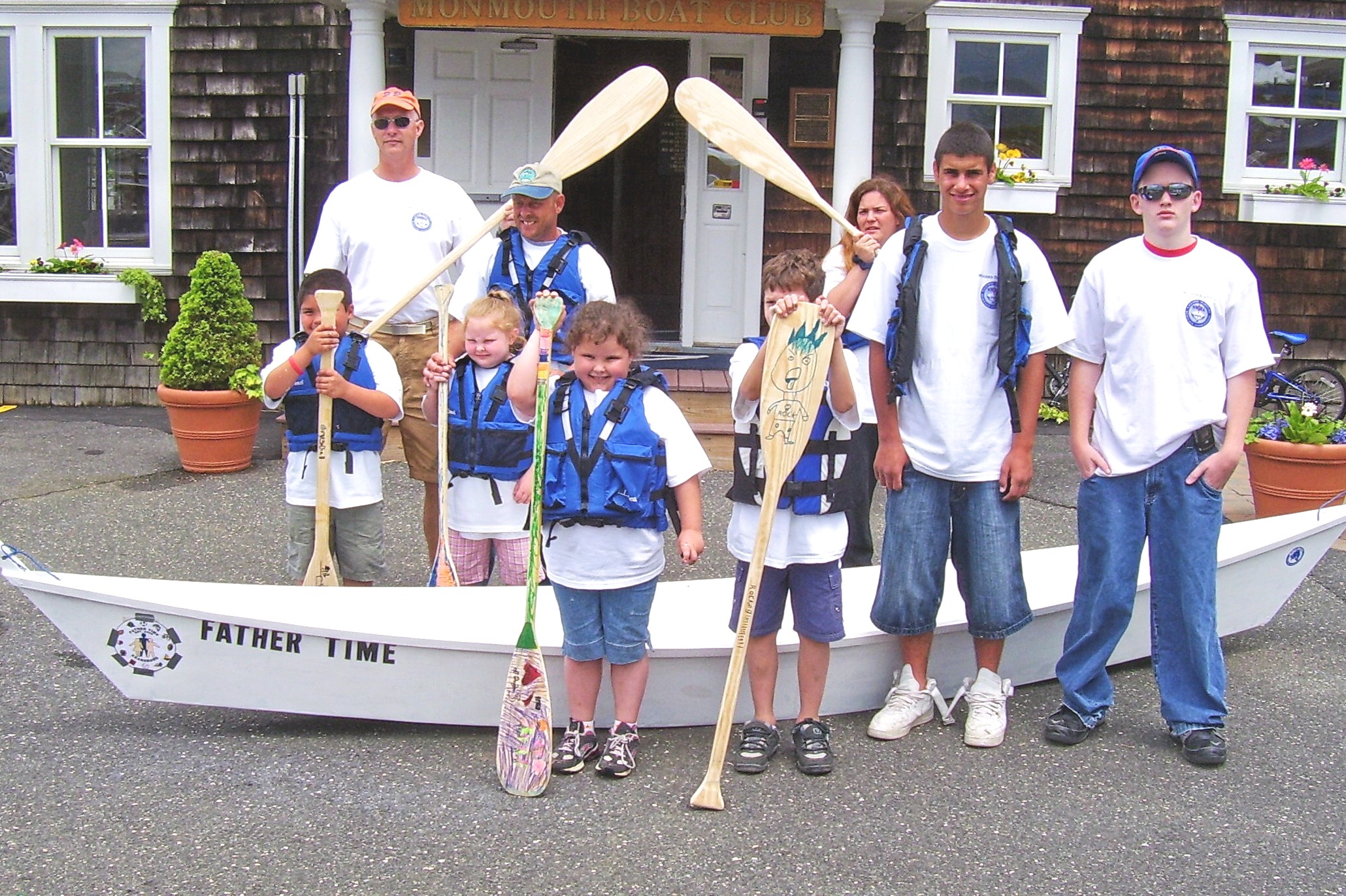 The following community groups have built boats over the years, several more than once:
The following community groups have built boats over the years, several more than once:- Red Bank Charter School (10 boats)
- Aslan Youth Ministries
- Monmouth Boat Club families
- Molly Pitcher Yacht Club families
- West Side Christian Academy
- Red Bank Parks and Recreation Department
- Salvation Army Youth Program
- Project USE of Red Bank
- Community YMCA of Red Bank
- Western Monmouth YMCA of Freehold
- Brad Cooper Rehabilitation Center family
- Boy Scout and Cub Scout troops
- The children at the boat fest generally start with a sense of incredulity. When they see a plywood panel and a drawing of the canoe, and told they will have a boat on Sunday afternoon. Their general response is: “No way!” In general they are overwhelmed by the prospect that they had to perform a lengthy sequence of tasks and could not envision the result at the end of the sequence.
- As soon as the first cut is made the vast majority of the kids were fully engaged.
- For most of the children this project is the first thing they ever made that they could actually use.
- At the end of the weekend these youngsters develop a sense of self-confidence and realize that even something
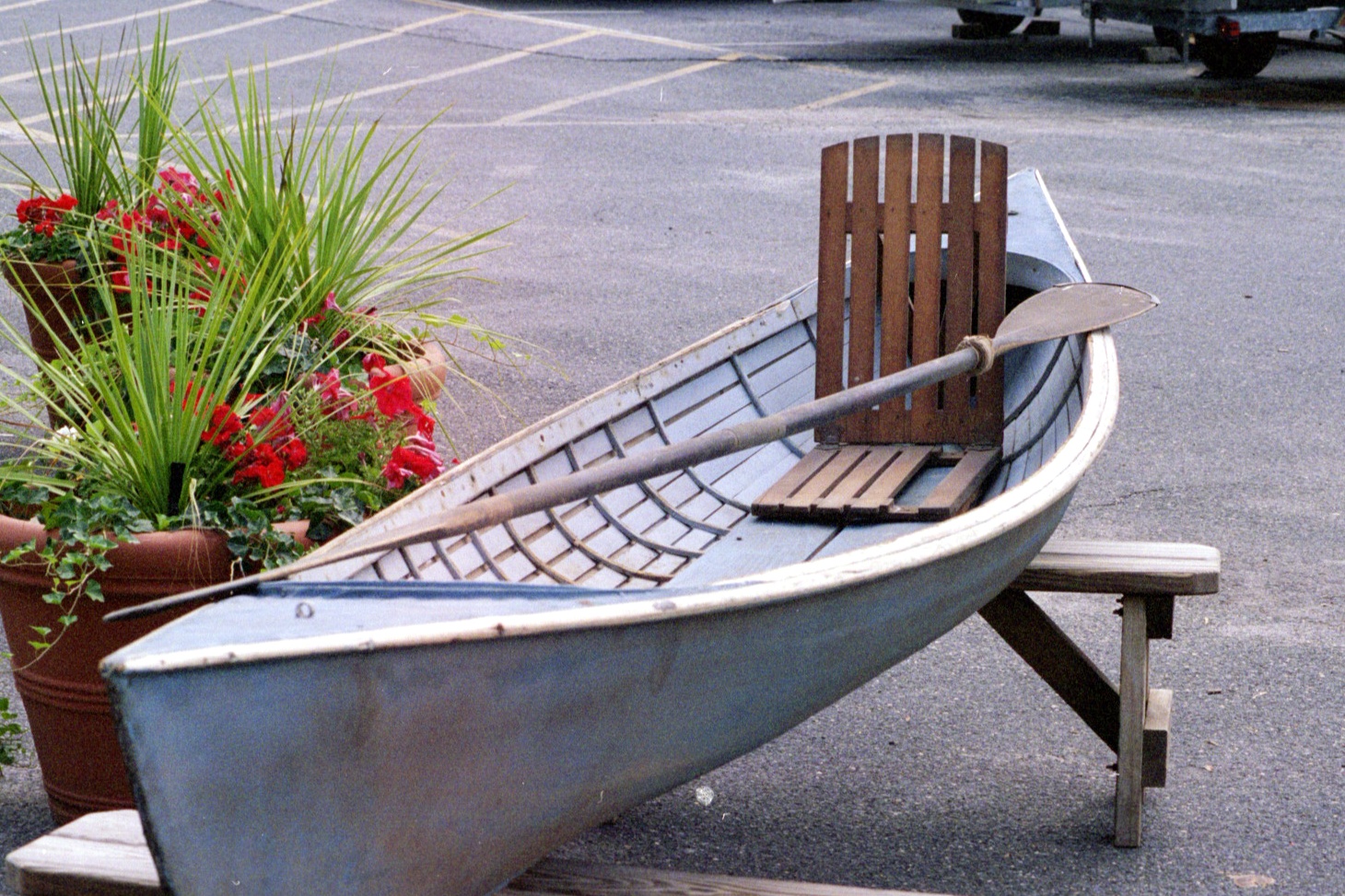 as alien and complex as a boat is well within their abilities to construct from simple materials with proper instruction. During the weekend each youngster gets to make his own wooden paddle from a plain piece of pine stair tread.
as alien and complex as a boat is well within their abilities to construct from simple materials with proper instruction. During the weekend each youngster gets to make his own wooden paddle from a plain piece of pine stair tread. - In summary this activity has shown that boatbuilding is instructionally extremely efficient and can in a very short period of time measurably increase a youngster’s level of confidence, self-reliance and awareness of his environment.
- This event is extremely photogenic and always receives significant press coverage up to and including state wide newspaper coverage.
- Antique and Classic Boat Rendezvous
- Since September 2001 NMHA has organized a wooden boat rendezvous at the Monmouth Boat Club on the Navesink River waterfront. We have invited regional wooden boat builders and owners to display their boats
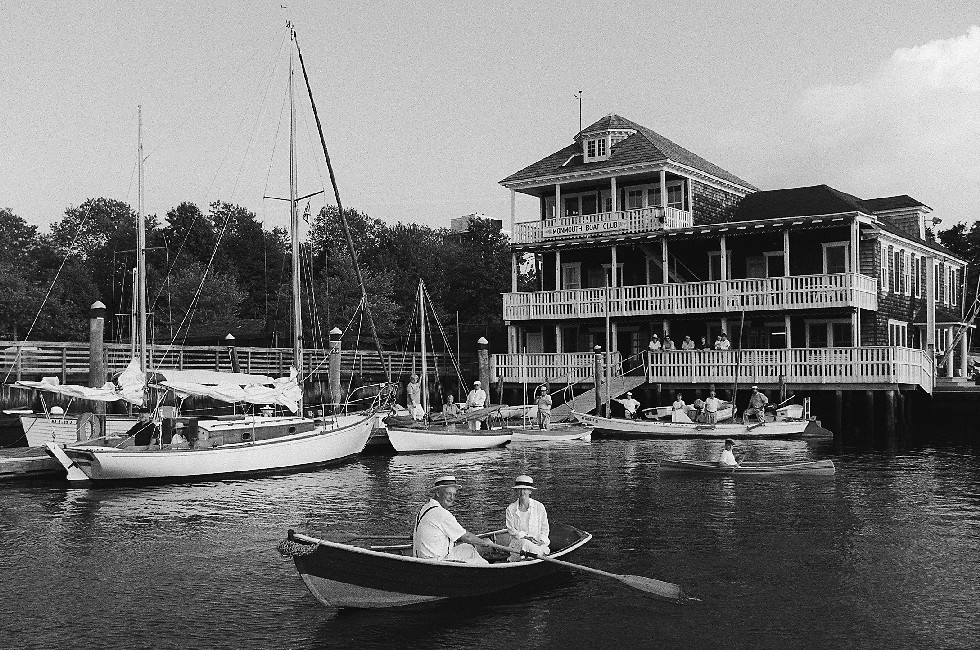 ashore and in the water. The boats ranged in size from a 40 foot schooner to Jersey Speed Skiffs, to a 12 foot Red Bank canoe built at Red Bank High School in 1917. The event allowed the owners to exchange ideas and knowledge about the various craft and a commemorative program was provided to each participant. Since the event was held at the Monmouth Boat Club facility.
ashore and in the water. The boats ranged in size from a 40 foot schooner to Jersey Speed Skiffs, to a 12 foot Red Bank canoe built at Red Bank High School in 1917. The event allowed the owners to exchange ideas and knowledge about the various craft and a commemorative program was provided to each participant. Since the event was held at the Monmouth Boat Club facility. - This is open to the public and the next event is scheduled October 6, 2007.
- Member Meetings
- NMHA organizes monthly membership meetings at the Monmouth Beach Cultural Center (former lifesaving station) in Monmouth Beach. These feature a presentation on a subject of interest related to the Navesink Maritime Heritage such as:
- The History of Steamboats on the Navesink River
- The History of Iceboats on the Navesink River
- The NY/NJ Baykeeper and Its Programs
- The Bayshore Discovery Project and the A J Meerwald, ‘Tall-Ship of New Jersey’
- The Navesink – Swimming River Restoration Project
- The Restoration of the 100-year old Ice Yacht “Rocket”
- The History of the Jersey Speed Skiff and National Sweepstakes Regatta in Red Bank
- The River Rangers Summer Program
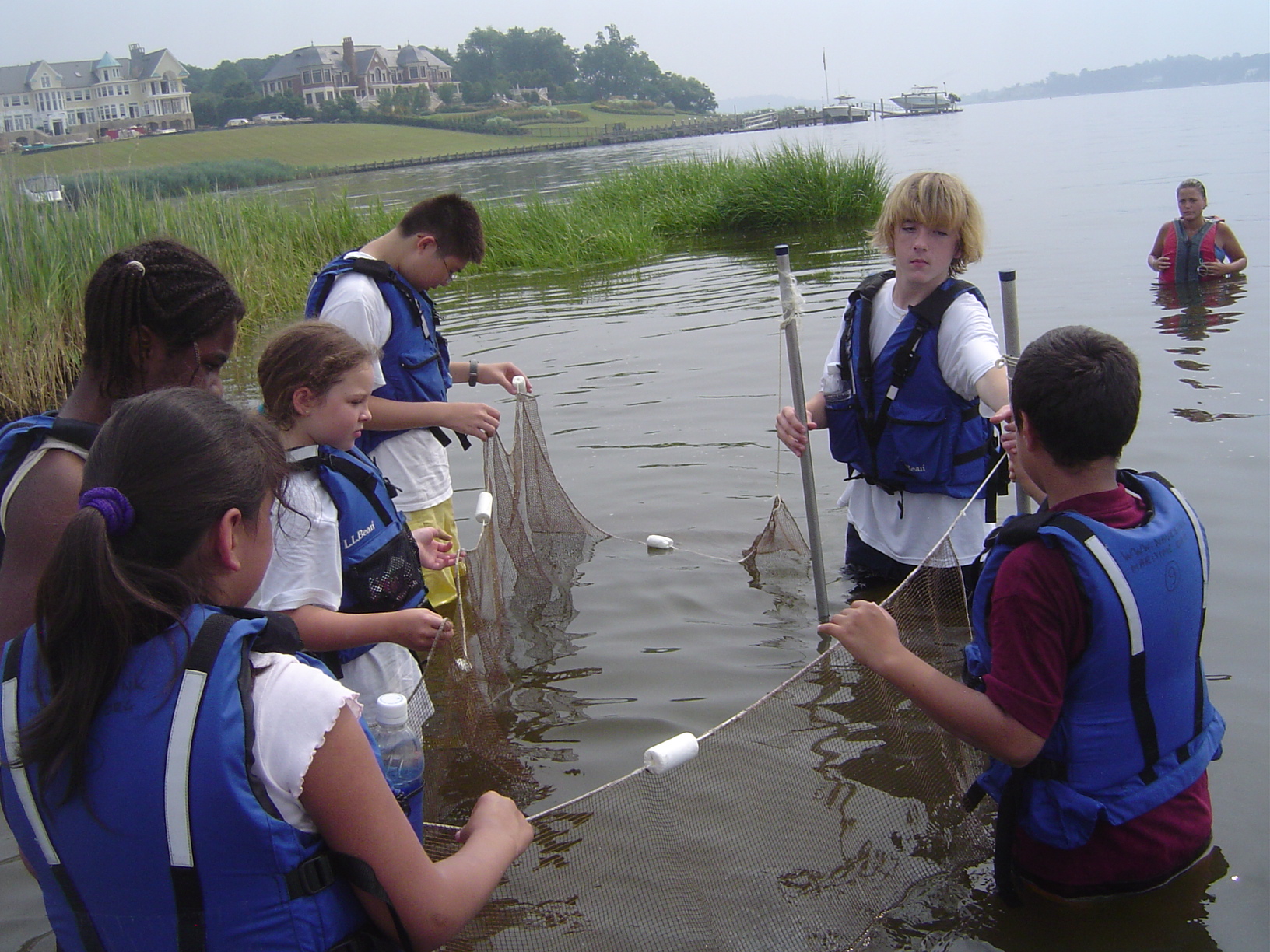 NMHA designed an innovative new program in 2004 – the River Rangers Program -- a 5 day on-the-water program for 5th through 8th graders paddling their own canoes, observing the river, wildlife, and writing logbooks of their experience.
NMHA designed an innovative new program in 2004 – the River Rangers Program -- a 5 day on-the-water program for 5th through 8th graders paddling their own canoes, observing the river, wildlife, and writing logbooks of their experience.- Program Objectives were:
- Appreciate local waterways environment
- Identify life forms in and around the water
- Learn about human impact on our watersheds
- Acquire decision-making, problem-solving and team-building skills
- in environments new to participants
- Learn how to get around on the water
- Have 5 days of safe fun on the water
- Program Format
- The daily program runs for 5-6 hours each day with 2 trained instructors, qualified in CPR and First Aid, leading 16 kids, middle school age, or older, in 8 canoes
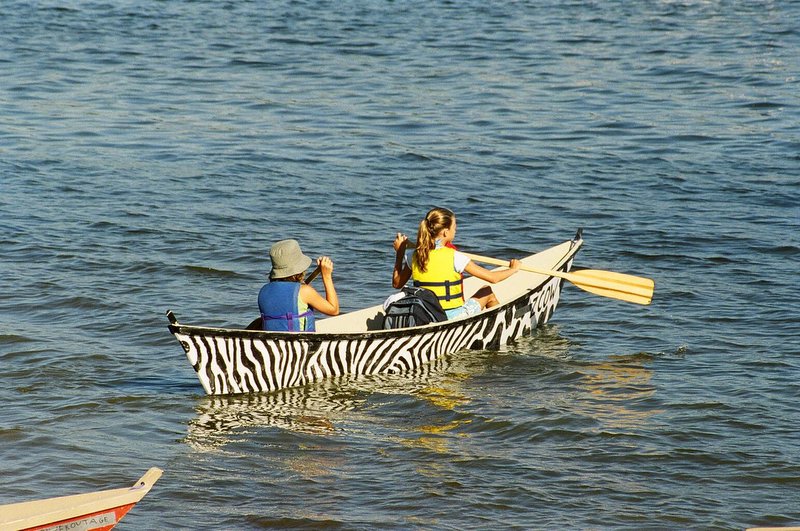 The training for two teachers includes information and guide to:
The training for two teachers includes information and guide to:
- River sites (launch, haulout, visit)
- Logistics (equipment, packing, timing)
- Maps, wild life identifiers, sample activities, rules
- One full day training the two teachers
- Team building skills
- Daily activities vary according to tidal variation, and weather, but include identifying plants, trees and animals; navigation and boating skills; maintaining a log book that Expedition Members take home at the end of the week; collecting and keeping a trash record; games on the water and shore exploration.
Navesink Maritime Heritage Association
contact@navesinkmaritime.org
www.navesinkmaritime.org
